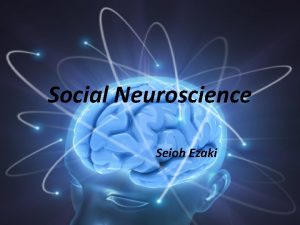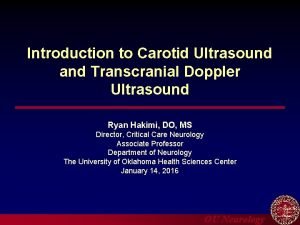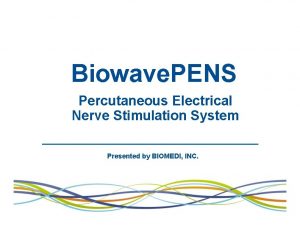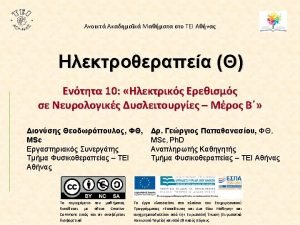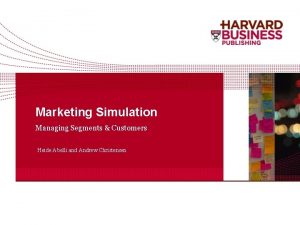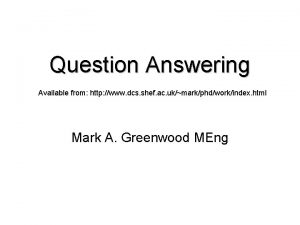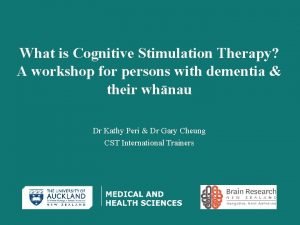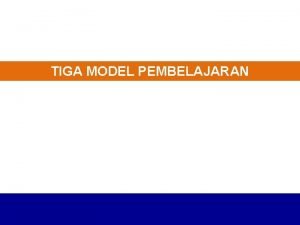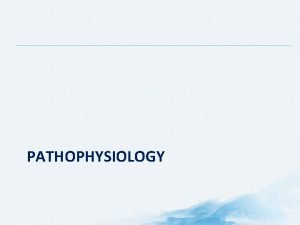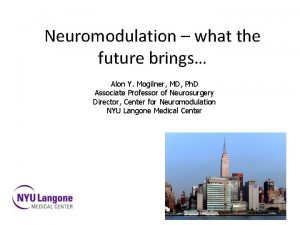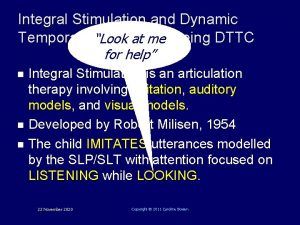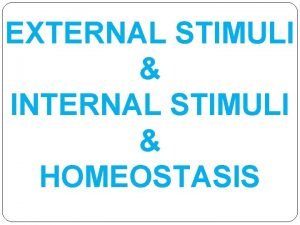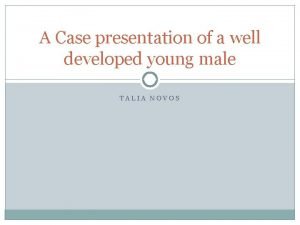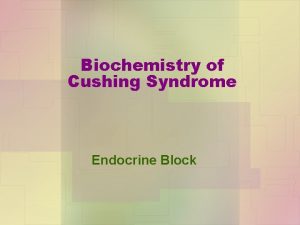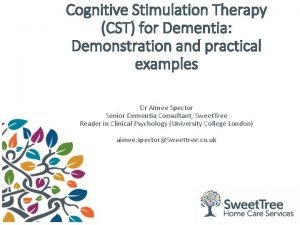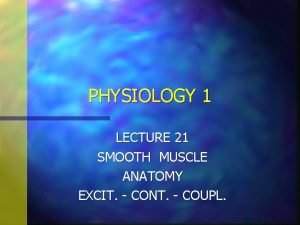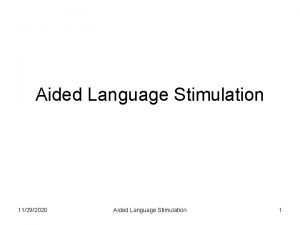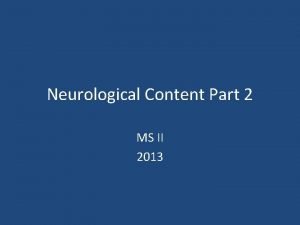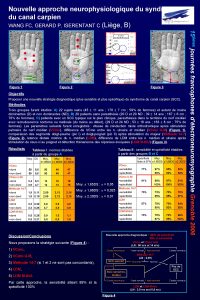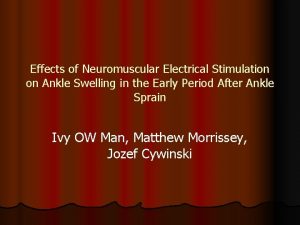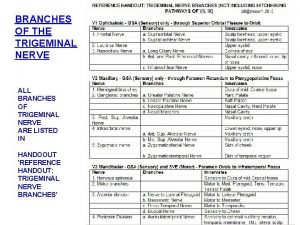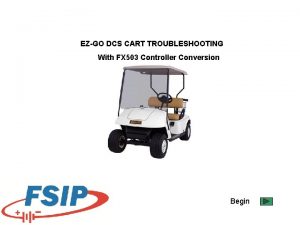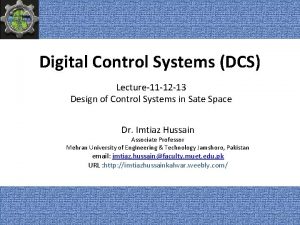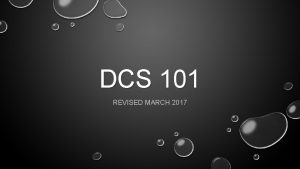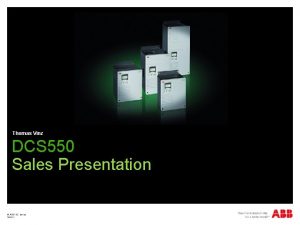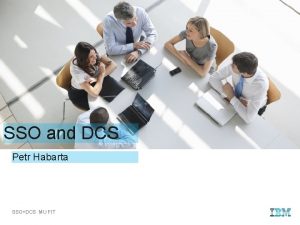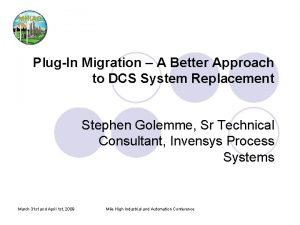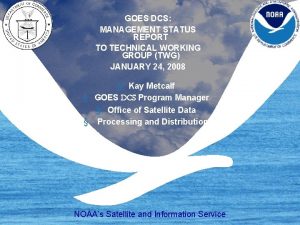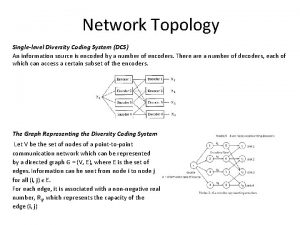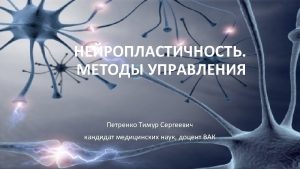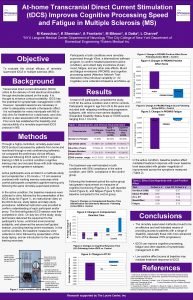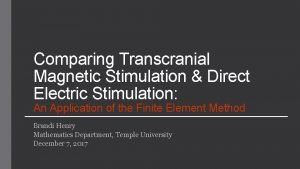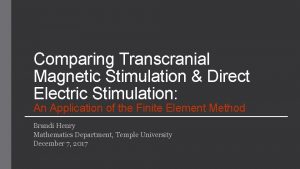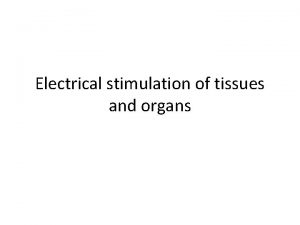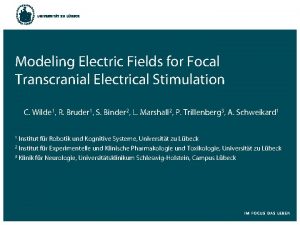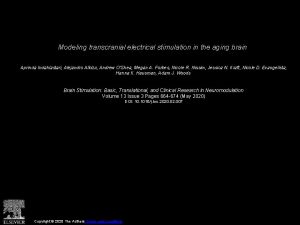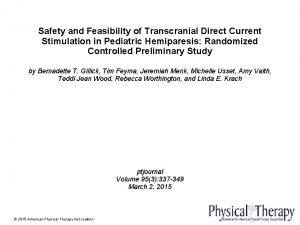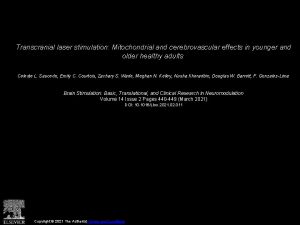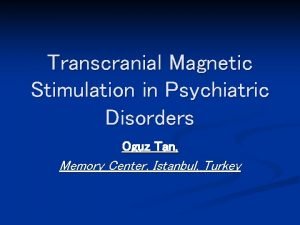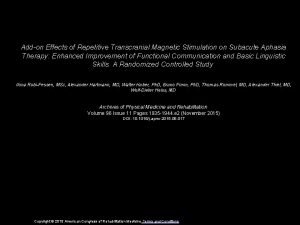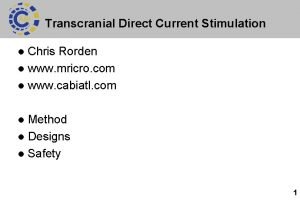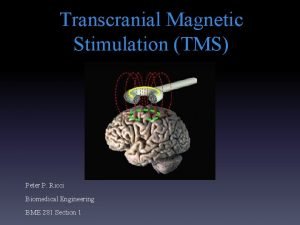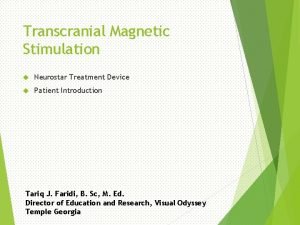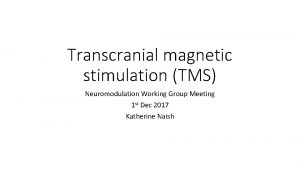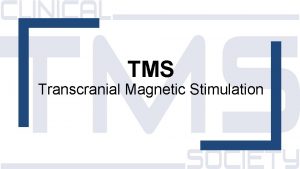Transcranial electrical stimulation t DCS and friends MA








































- Slides: 40

Transcranial electrical stimulation - t. DCS and friends MA Nitsche Georg-August-University, Dept. Clinical Neurophysiology, Goettingen, Germany

Electrical Stimulation in the 18 th century

Electrical Stimulation in the 19 th century

(1910)

Transcranial electrical stimulation (TES) 1980

Common aspects of these treatments • Suprathreshold stimulation • Phenomenological effects DCS • Subthreshold stimulation • Physiological effects

Principal action of DC-stimulation: modulation of resting membrane potential

Cortical DC-stimulation of the rat: effects during stimulation … Baseline Text cathodal anodal Bindman et al. 1964

…and after-effects anodal cathodal Bindman et al. 1964

After-effects are protein synthesisdependent Gartside 1968

…and accompanied by specific biochemical alterations 30 min 3 h stimulation dark neurones

50% of transcranially applied direct currents reach the brain - calculations on realistic head models, validation in animal experiments (Rush & Driscoll 1968) - validation in humans (Dymond et al. 1975)

t. DCS in humans

Polarity-dependent excitabilitymodulation during t. DCS Nitsche & Paulus 2000

Enhanced motor cortico-spinal excitability after anodal stimulation Nitsche & Paulus 2001

Reduced motor cortico-spinal excitability after cathodal t. DCS 1. 2 1. 0 0. 8 0. 6 0. 4 1 5 10 15 20 25 30 35 40 45 50 55 60 90 Nitsche et al. 2003 120 min

Mechanisms of action - the electrophysiological perspective DC electrode Intracortical afferents Pt-neuron

Cortico-spinal effects DC electrode I-O curve Intracortical afferents Pt-neuron Resting motor threshold Intra-t. DCS 70 Active motor threshold 1 m. A, 35 cm 2 60 50 40 30 20 10 0 non (a) non (c) cathodal anodal Nitsche et al. 2005

Pt-neuron effects DC electrode Intracortical afferents Pt-neuron TMS TES anodal 1 m. A, 35 cm 2 cathodal 1, 5 m. A, 35 cm 2 Nitsche & Paulus 2000, 2001, Nitsche et al. 2003 Ardolino et al. 2005

intracortical effects DC electrode intracortical facilitation/inhibition Intracortical afferents Pt-neuron anodal 1 m. A, 35 cm 2 cathodal I-wave facilitation Nitsche et al. 2005 anodal 1 m. A, 35 cm 2 cathodal

Differentiation between intracortical/corticospinal effects DC electrode Intracortical afferents Ptneuron Boros et al. 2008

Conclusion I Cortico-spinal effects SP-MEP, I-O curve, (threshold) Intracortical effects Pt neurons SICI, ICF, (I-waves) (TES) ? ? ?

Mechanisms of action - pharmacological perspective Transmitter Na, Ca NMDA Na, Ca GABA Mdodulator Na, Ca DA Na, Ca ACh Na, Ca Serotonin e

Acute effects of t. DCS are ion channeldependent Nitsche et al. 2003, 2004 Drug and stimulation condition

Pharmacological dependance of after-effects of t. DCS I Nitsche et al. 2003

Pharmacological dependance of after-effects of t. DCS II Nitsche et al. 2003, 2004

Pharmacological modulation of after-effects I Nitsche et al. 2006, Kuo et al. 2008

Pharmacological modulation of after-effects II Kuo et al. 2008, 2007, Nitsche et al. , 2009

Conclusion II Na, Ca NMDA Ca Ca GLU GABA DA ACh Serotonine ? ? ? ? AMPA

Focality of t. DCS Imaging Functional M 1 premotor Baudewig et al. 2001, Lang et al. 2005 Nitsche et al. 2005

Increasing the focality of t. DCS by reducing the size of the stimulation electrode I Nitsche et al. 2007

Increasing the focality of t. DCS by reducing the size of the stimulation electrode II

Increasing the focality of t. DCS by increasing the size of the reference electrode

Safety of t. DCS -No enhancement of NSE (Nitsche & Paulus 2001, Nitsche et al. 2003 -No cerebral edemas or related alterations (Nitsche et al. 2004) -No epileptic seizures (Liebetanz et al. 2006) -Current protocols well below the threshold of tissue damage (Liebetanz et al. 2009)

Recent developments t. ACS t. RNS

t. ACS Relatively small effects on motor cortex excitability. . . Antal et al. 2008

. . . but prominent functional effects Antal et al. 2008, Kanai et al. 2008

t. RNS Motor cortex excitability Motor learning Terney et al. 2008

What to choose t. DCS t. ACS t. RNS Current flow constant sinusoidal random Mechanisms of action Studies available ? ? Safety Studies available ? ? Excitability Facilitation/inhibition Facilitation Spontaneous activity Modulation Synchronisation? Desynchronisation? Learning + + + Clinical application Studies available ? ?

Thanks for your attention
 Transcranial magnetic stimulation
Transcranial magnetic stimulation Carotid doppler velocity chart
Carotid doppler velocity chart Biowave pens
Biowave pens Electrical muscle stimulation iowa
Electrical muscle stimulation iowa Aesop's fables the lion and the mouse
Aesop's fables the lion and the mouse Heide abelli
Heide abelli Dcs question and answer
Dcs question and answer Cognitive stimulation therapy training
Cognitive stimulation therapy training Stimulation dalam pembelajaran
Stimulation dalam pembelajaran Noxious stimulation
Noxious stimulation Mogilner implants
Mogilner implants Integral stimulation
Integral stimulation Internal stimuli examples
Internal stimuli examples Cortisol stimulation test results
Cortisol stimulation test results Crh stimulation test interpretation
Crh stimulation test interpretation Adrenal gland regions
Adrenal gland regions Steve jobs transformational leader
Steve jobs transformational leader Electric stimulation springville
Electric stimulation springville Cognitive stimulation therapy training course
Cognitive stimulation therapy training course Besoins cognitifs
Besoins cognitifs Muscle stimulation
Muscle stimulation Sensory stimulation theory
Sensory stimulation theory Aided language stimulation
Aided language stimulation Stimulation du nerf tibial postérieur
Stimulation du nerf tibial postérieur Coma stimulation techniques
Coma stimulation techniques Ibp advertising
Ibp advertising Stimulation du nerf vague
Stimulation du nerf vague Electronic muscle stimulation ankle sprain
Electronic muscle stimulation ankle sprain Selective demand stimulation example
Selective demand stimulation example Trigeminal
Trigeminal Ezgo dcs wiring diagram
Ezgo dcs wiring diagram Regulator control system
Regulator control system Dcs stands for
Dcs stands for Dcs system integrator
Dcs system integrator Abb dcs 550
Abb dcs 550 Ssodcs
Ssodcs Dcs migration strategy
Dcs migration strategy Dcs-5605
Dcs-5605 Dcs provider training
Dcs provider training Dcs management
Dcs management Dcs coding
Dcs coding
